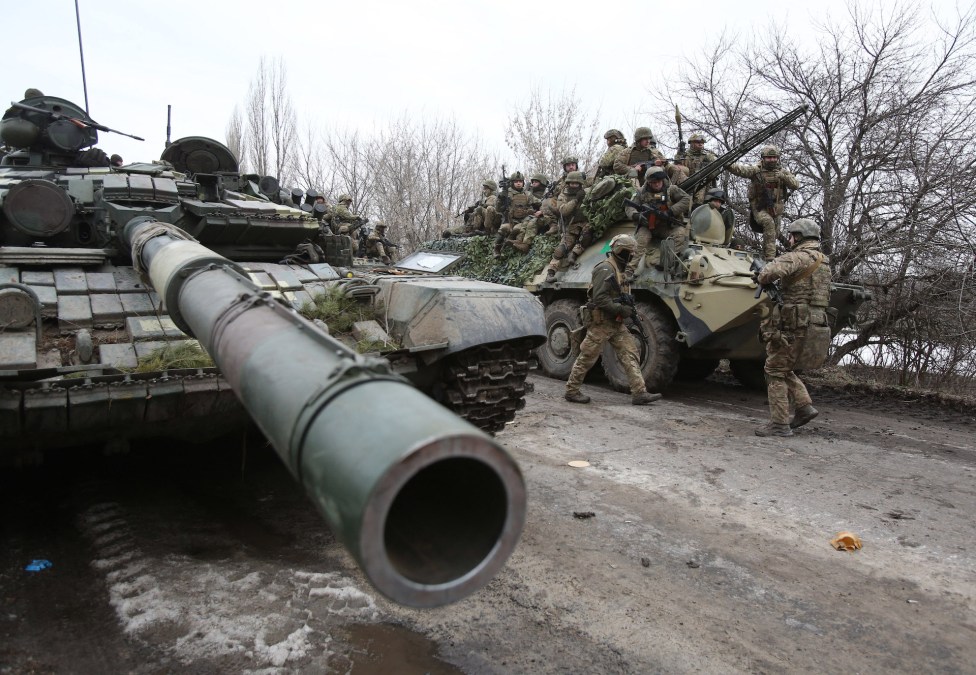What Russia’s invasion of Ukraine is revealing about tech in modern warfare

Russia’s ongoing invasion of Ukraine is teaching national security experts new things about the current status of artificial intelligence and automation in modern warfare — and how to prepare for possible future conflicts with authoritarian regimes.
Much of the devastation so far is the result of conventional military systems. That likely won’t always be the case, former Defense Department officials and military experts warned this week.
“We haven’t seen a conflict on this scale in quite a long time, but many aspects of this conflict really highlight what has been changing in the 21st century. Unmanned systems, remotely piloted systems and autonomous systems were all the sorts of things that some have argued were not going to be a part of a high-intensity fight, they were only going to be relevant to counterinsurgency conflicts. I think that myth has been blown wide open. But what we’ve only seen is the first move, in which there will always be countermoves,” Gregory Allen, a senior fellow with the Center for Strategic and International Studies’ strategic technologies program, said Tuesday at the Nexus 2022 national security symposium.
Allen served as the director of strategy and policy review at the Pentagon’s Joint Artificial Intelligence Center (JAIC) before leaving the department earlier this year.
He recently assessed evidence alleging that Russia is using artificial intelligence-enabled autonomous weapons systems against Ukraine and, ultimately, did not find the claims to be credible. Still, many of the remotely piloted, unmanned systems operating in this conflict have been “really remarkably effective,” Allen noted.
Observations from this initial phase of the war can suggest how nations’ organizational structures and technological investments might need to adapt to ensure competitive military advantage down the line.
“What we’ve been seeing in Ukraine is munitions … where these are kamikaze drones that cost somewhere in the low tens of thousands of dollars a shot, that are annihilating million-dollar tanks at volume. There is a cost and competitiveness revolution going on in military technology, all of which is underpinned by the progress that we’ve seen in commercial digital technology — not least of which is artificial intelligence,” Allen said.
In following Russian-language media over the last few weeks, Allen observed a narrative that he said suggests that, as more electronic warfare systems and drone countermeasures are introduced in this unfolding conflict, pressure is mounting on all sides — but particularly from Russian military organizations — to deploy increasingly autonomous systems.
“I think we’ve seen, throughout history, Russia really underperforming in the early stage of just about every war, and that not necessarily being a great predictor of what the long-term outlook looks like,” Allen noted.
Margarita Konaev, a native-Russian speaker and non-resident senior fellow at the Atlantic Council who studies AI-related defense applications and Russian military innovation, said right now she feels like she and other analysts have “gotten a lot of things wrong.”
“If you are looking at the performance of the Russian military right now, it is very difficult to tell that the last decade and a half has been in fact dedicated to significant reforms that focus on professionalization, on new equipment, autonomous capabilities, a lot of robotics, unmanned systems, electronic warfare, AI for command and control, information, cyber warfare. There were grand expectations, and we have not seen them. And so it’s a great point of reflection for the community that has studied Russia,” she said.
In Konaev’s view, the invasion at this point is highlighting a sharp difference between development of military technology and actual adoption.
“What we’re seeing right now is that the technical barriers to innovation are really not the most significant barriers to the use and scaling and integration of some of these sophisticated and advanced technologies and operations. A lot of it has to do with institutional, bureaucratic, cultural, human trust issues, let alone between humans and machines,” she noted.
By all assessments, Russia has access to some of the most sophisticated electronic warfare capabilities in the world. “So the fact that the Ukrainian military is able to inflict such massive damage with quite rudimentary and relatively cheap drones is significant,” she said.
Capabilities to counter automated technologies must be considered as a potential future priority in terms of Russia’s modernization pursuits, according to Konaev.
Looking ahead, Konaev is worried about “the pendulum swinging to a point where we completely underestimate what comes next from the Russian perspective.”
Russia is a nuclear power and still has access to a significant amount of conventional fighting capabilities, she noted, adding that “the relationship between Russia and China is also going to be very interesting and complicated.”
While he was at the JAIC, Allen made a number of trips to China where he spoke with dozens of Chinese officials and experts about artificial intelligence.
“The Chinese military is in the midst of a major AI-enabled modernization effort. They are really changing a lot of the way that they do what they do,” he said.
At one recent conference, a senior Chinese weapons executive Allen had met told a global audience that “in the future, there will be no people fighting the wars,” and that his China-based company is building autonomous systems now to prepare.
Allen also pointed to a recent report that China’s leader Xi Jinping was shaken by what he has seen in the Ukraine-Russia conflict, where commercially-derived drones are taking out expensive military-designed hardware.
“That work may or may not be true, but it is absolutely the case that the Chinese military has drawn a lot of lessons from what we’re seeing in Ukraine, and that’s why time matters a lot,” Allen said. “I think we should expect a lot to change in a relatively short period of time.”
August Cole, a non-resident senior fellow at the Atlantic Council and author of novels about the use of emerging military technologies, added that any future conflict with China is going to be “fundamentally decided by data.”
Liza Tobin, senior director of research and analysis for economy at the Special Competitive Studies Project — who previously served on National Security Council staff as China director — said Beijing has a comprehensive plan to “control the networks, the platforms, and importantly, the standards of this emerging digital economy.”
To China, data marks a new source of innovation and economic growth. So much so, Tobin noted, that the nation’s leaders have updated their Marxist theory to add data as a fourth factor of production.
“For those of you who may be rusty on your Marxist theory, the original three are land, labor and capital. So, when you put them all together in creative ways, it produces economic growth. But unfortunately, the Chinese economy is slowing. The era of easy industrialization and demographic growth is over. So they can’t squeeze any more marginal productivity out of land, labor and capital. Enter data, this new fourth factor of production. And so they are betting that this is a way out of the middle income trap and that by exploiting the many benefits and opportunities of data, they can actually grow their economy in ways that we can’t,” she explained.






